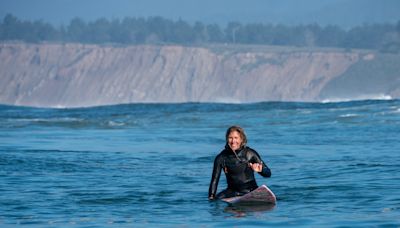Search results
A wave is a disturbance in a medium that carries energy without a net movement of particles. It may take the form of elastic deformation, a variation of pressure, electric or magnetic intensity, electric potential, or temperature. Table of Content. Introduction of Waves. Types of Waves. Transverse Waves. Longitudinal Wave. Mechanical waves.
The first choice for Grammy-winning mixing engineers, music producers, musicians and sound designers, Waves is the world-leading maker of audio plugins, software and hardware for audio mixing, music production, mastering, post-production and live sound.
May 14, 2024 · wave, propagation of disturbances from place to place in a regular and organized way. Most familiar are surface waves that travel on water, but sound, light, and the motion of subatomic particles all exhibit wavelike properties.
The different types of waves are: mechanical, electromagnetic, and matter waves. Mechanical waves are divided into transverse and longitudinal waves. UV rays and radio waves are types of electromagnetic waves.
Wave motion, propagation of disturbances—that is, deviations from a state of rest or equilibrium—from place to place in a regular and organized way. Most familiar are surface waves on water, but both sound and light travel as wavelike disturbances, and the motion of all subatomic particles exhibits.
Explain the What is Wave, Type of Waves, Classification of waves, Mechanical Waves, Non-mechanical Waves, Longitudinal wave and Properties of Wave at Aakash
A wave transfers energy from one place to another. Examples of waves include: water waves, sound waves, light waves, radio waves, microwaves, x-rays, ultrasound waves and seismic waves from an...
Wave, a ridge or swell on the surface of a body of water, normally having a forward motion distinct from the oscillatory motion of the particles that successively compose it. The undulations and oscillations may be chaotic and random, or they may be regular, with an identifiable wavelength between.
What is a Wave? Categories of Waves. Lesson 2 - Properties of a Wave. The Anatomy of a Wave. Frequency and Period of a Wave. Energy Transport and the Amplitude of a Wave. The Speed of a Wave. The Wave Equation. Lesson 3 - Behavior of Waves. Boundary Behavior. Reflection, Refraction, and Diffraction. Interference of Waves. The Doppler Effect.
A wave is a repeating disturbance that travels through matter or space transferring only energy. Below is a model of a wave. A wave’s crest is its highest point, and its trough is its lowest point. A wave’s amplitude is the maximum distance (positive or negative) a wave reaches from its rest position.



